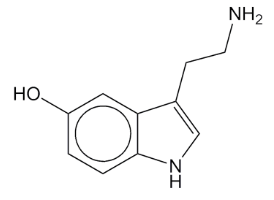Newest National Historical Chemical Landmark here in Cleveland!

The American Chemical Society Cleveland Section Archive Committee is proud to announce that the Cleveland Clinic Foundation will be receiving a National Historic Chemical Landmark designation for the Discovery of Serotonin. In the late 1940’s and early 1950’s, serotonin, an important neurotransmitter, was isolated and identified by a team of Cleveland Clinic researchers (Betty Twarog, Arda Green, Maurice Rapport, and Irvine Page). Serotonin plays a part in mental health or illness, mood, digestion, nausea, sleep, wound healing, and bone density. The discovery of serotonin is often credited with being the most important in the history of neuroscience, perhaps even giving birth to the entire field.
The Cleveland Clinic is known for its pioneering work in cardiology, and the compound that is now known as serotonin (5-hydroxytryptamine) was initially isolated because it was thought to be involved in essential hypertension. After one of the Cleveland Clinic studies that showed that serotonin is found in the mammalian brain, serotonin sparked research interest worldwide. Over the years, it has been determined that around 90% of the serotonin in the human body is produced in the gastrointestinal system, and 10% is produced by the brain. In the gut, serotonin appears to mediate many functions including peristalsis, secretion, and perception of pain or nausea, and assists in ridding the body of toxins by signaling vomiting and diarrhea. In the circulatory system, serotonin is taken up and stored by platelets and can be released during vascular injury, which causes the smooth muscle of small blood vessels to constrict, slowing blood flow and enabling clots to form. Thus, while serotonin does not appear to play a significant role in essential hypertension as initially postulated, it is a critical regulator of vascular biology and homeostasis.
The official designation ceremony is planned for April 2026 in conjunction with the Page Lecture, an annual event that features a lecture in honor of Dr. Page by an invited renowned scientist, a lecture by the young scientist who won the Irvine Page Award at the last annual American Heart Association meeting, and a reception
This will be the Cleveland Section’s eighth National Historic Chemical Landmark, which ties Cleveland with the New York City section for the most Landmarks. The other Cleveland landmarks are: the Columbia Dry Cell Battery (Eveready), DayGlo Fluorescent Pigments, Edward Morley and the Atomic Weight of Oxygen (Case Western Reserve University), Hall Process for Aluminum (Oberlin College), High Performance Carbon Fibers (GrafTech), Modern Water Based Paint (Sherwin-Williams), and the Sohio Acrylonitrile Process . More information about the Landmark program, including a description of each Landmark, can be found at https://www.acs.org/education/whatischemistry/landmarks/landmarksdirectory.html.
